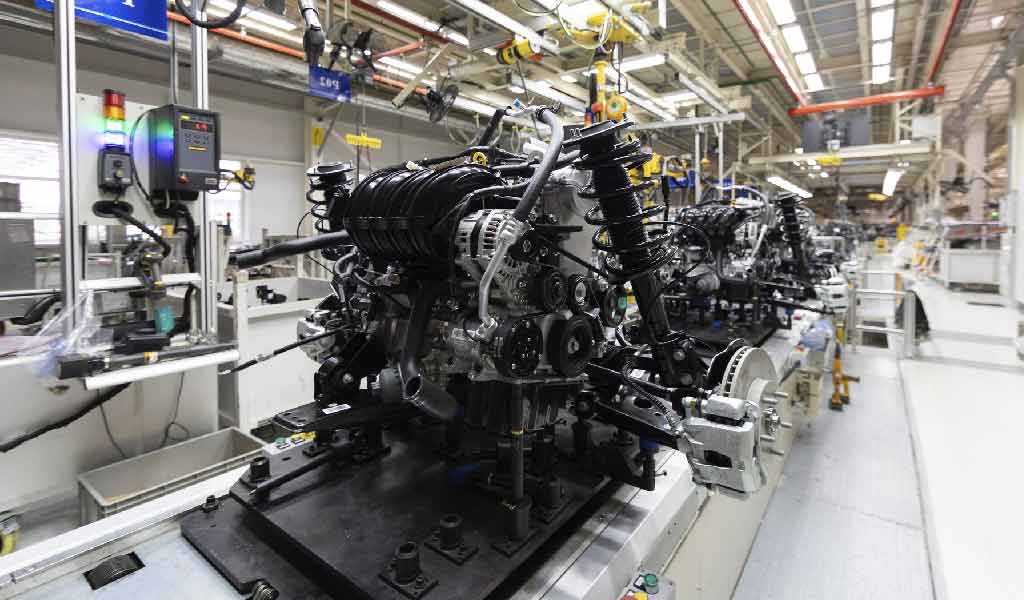Traceability provides answers to questions such as "where it was made, how it was made and by whom", which offers many advantages. This is why industrial traceability is essential in demanding sectors such as aeronautics, food and pharmaceuticals, among others. In this article we talk about traceability and why it is so important.

What is traceability?
Traceability is the ability to track each part and product throughout the entire manufacturing process, or even beyond (suppliers, distribution, etc.). Traceability allows complete tracking of the entire history of a product: what raw materials have been used, what processes it has undergone, what results it has obtained in inspections and what decisions have been taken, etc. It is therefore key information not only for the customer, but also for the continuous improvement of processes insofar as it makes it possible to identify sources of problems and act on specific aspects of the process.
Traceability can be ensured at different levels within the entire value chain, which leads us to classify it in different ways depending on the areas it includes, either by the type of assets or the dimensions of the study.
Types of traceability: physical and digital
Depending on the type of asset, monitoring and follow-up has two aspects: physical and digital.
At the physical level it can be done on the physical resources, i.e., the part to be manufactured, its parts or components, the batches that are made up for shipment, etc. This part also includes everything related to the location: where it is at this moment, where it has been before, etc.
But it is also possible to extend this traceability to the digital level, including here the processes and/or human resources themselves. Some data in this sense could be the parameters of the machining processes, the programs used or the workers who have been involved in the processes and any other information that we can store digitally.
Is traceability and identification the same thing?
Although they are closely related, it is important to differentiate traceability from identification. We have already defined traceability, and if we now turn to what ISO 9000 says about traceability we can read that it is the "ability to follow the history, application or location of a target".
Identification, on the other hand, is "just" the ability to identify and differentiate an object from others.
The difference is obvious. Traceability, unlike identification, allows us to collect information that we can use to analyze and improve shop floor processes. For example, traceability data can be used to generate intelligent digital models that enable real-time management of resources and orders.
Although they are closely related, it is important to differentiate traceability from identification..
Why traceability is important in production processes
Having a good traceability system offers a series of very important advantages in the industry. The following are some of the most important ones.
Improving quality and efficiency
Traceability helps improve quality and efficiency by providing manufacturers with visibility into their operations and making it easier to identify the cause(s) of problems that would otherwise be difficult to have.
For example, thanks to the traceability information of a part, the moment you detect an out of tolerance (if possible before reaching the end of the line) you will be able to identify the possible sources of the problem, thus facilitating a direct action and a much more agile and efficient resolution.
It will only be a matter of time before traceability becomes a standard.
If you do not have a traceability system, the response to this situation would be much slower and ineffective, requiring more time and dedication of operators, generating problems with customers and even the loss of orders.
2. Encourages continuous improvement
Having information on how components and parts move along the production lines favors continuous improvement, as it allows identifying critical paths, where bottlenecks occur, sources of delays, sub-processes where the highest volume of defective parts is generated, etc.
3. Root cause analysis
Having information on the journey that all products have taken allows manufacturers to perform deeper analysis that makes it easier to detect the root cause of problems and inefficiencies. Resolving root problems is something that can have a big impact on the entire line.
4. Regulatory compliance
As we will see later, there are some sectors in which traceability is a required criterion due to the nature of the activity. Therefore, if you wish to enter any of these markets, it will be necessary to have a traceability system that complies with their specific regulations.
It may also be necessary to develop a traceability system because a customer demands it. Our recommendation is to take the initiative before that happens and implement such a system to benefit from the value it brings both internally (process improvement) and externally (customer-facing).
In addition, the trend is that more and more sectors are incorporating traceability criteria (beyond those in which it is mandatory and which we will mention below). It will therefore be a matter of time before it becomes a standard, so the sooner we work on it, the better.
Examples of sectors where traceability is fundamental
We have seen that traceability offers numerous advantages, but there are cases in which beyond the benefits to be gained from it. There are industries where traceability is a mandatory requirement due to the very nature of the activity. Knowing some sectors where traceability is essential and their reasons can help us to better understand the benefits of this feature.

Traceability in the aeronautical sector
A commercial airliner consists of millions of hardware and software components. Nevertheless, the airplane is by far the safest means of transport, as it has the strictest safety critical criteria.
The reason is obvious: in the event of an accident, the consequences can be catastrophic. That is why a lot of effort is devoted to minimize the possibility of such an occurrence.
When a failure occurs, even a minor one, it is essential to know what happened and why. This implies that all parts from all manufacturers and suppliers must have full traceability in order to be able to perform the root cause analysis we were talking about. In this way it is possible to know exactly where in the supply chain a failure has occurred, allowing the recall of that product and similar defective products prior to installation.
Traceability in the food and pharmaceutical sectors
Other sectors where traceability is essential (and mandatory) are food and pharmaceuticals.
In both industries, traceability allows the collection of information that identifies and records, among other data, the composition, distribution and marketing destination of the products. The objective is to preserve the safety of the end consumer in the event of a defective lot, to ensure quality criteria and compliance with standards, and to identify the cause and origin of the problem.
Traceability within the digital strategy
As we have seen, traceability can have a very positive impact on the operations and accounts of companies: cost reduction, quality improvement, efficiency improvement, etc. It is undoubtedly a key tool to achieve more efficient and autonomous processes.
The information obtained from the traceability system has a direct impact on efficiency, productivity and quality, especially when using automated systems that make decisions autonomously based on this data.
Even if processes are not fully automated, traceability data is a valuable input for decision making. It is also increasingly valued by customers because of the transparency it offers.
As we always say, the deployment of a technology that facilitates traceability should always be done within the framework of a broader digital strategy that is aligned with the needs of the business.
We help you to implement it
In this sense, when our customers are considering the implementation of new technologies, we always recommend maintaining an integrative perspective. To undertake these transformations, we need tools that integrate factory planning and get the most out of the whole.
If you need help to implement this kind of solutions in an agile and effective manner contact us at. We will be glad to hear from you.
Photo header: peoplecreations (Freepik) | Factory photo: usertrmk (Freepik)
